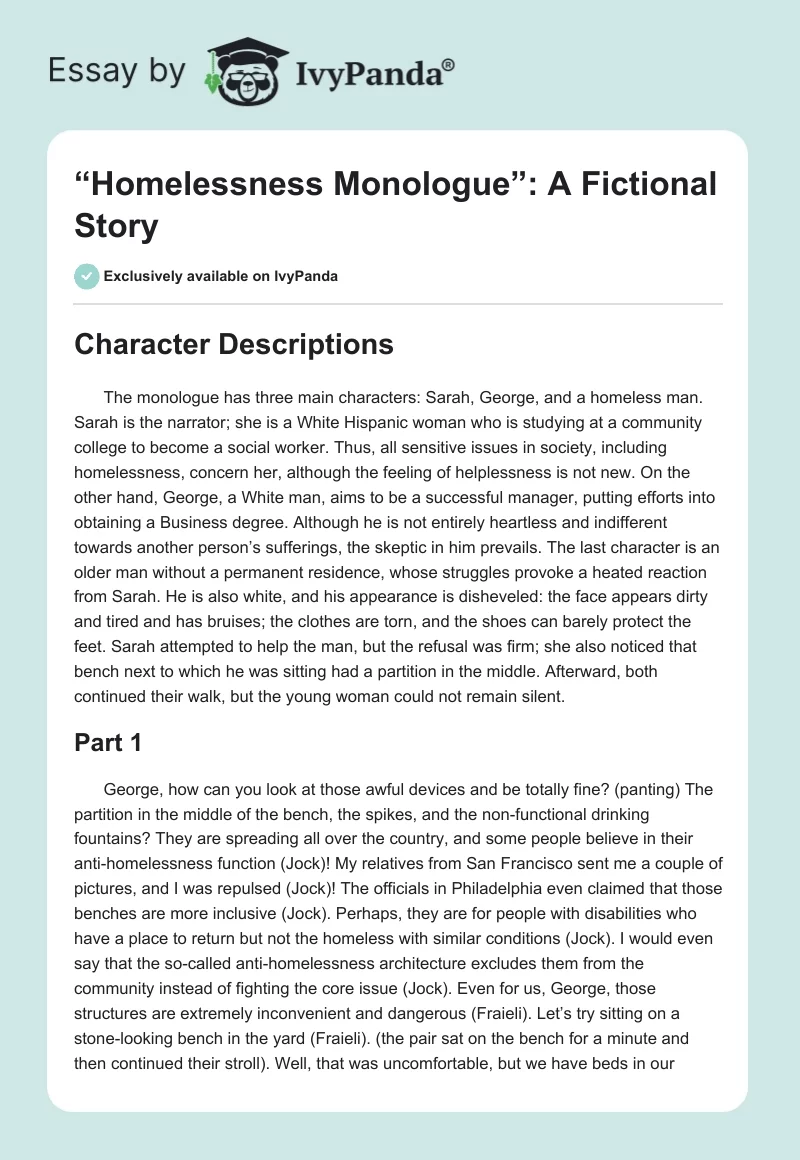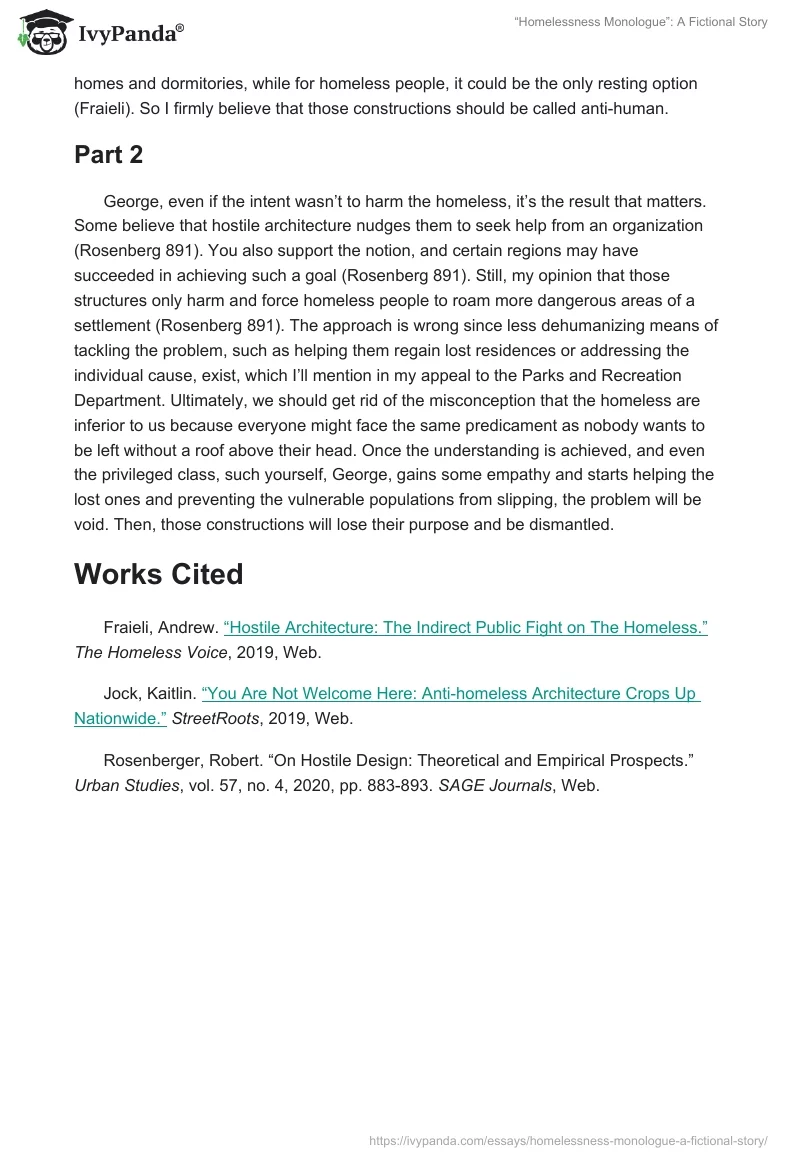Character Descriptions
The monologue has three main characters: Sarah, George, and a homeless man. Sarah is the narrator; she is a White Hispanic woman who is studying at a community college to become a social worker. Thus, all sensitive issues in society, including homelessness, concern her, although the feeling of helplessness is not new. On the other hand, George, a White man, aims to be a successful manager, putting efforts into obtaining a Business degree. Although he is not entirely heartless and indifferent towards another person’s sufferings, the skeptic in him prevails. The last character is an older man without a permanent residence, whose struggles provoke a heated reaction from Sarah. He is also white, and his appearance is disheveled: the face appears dirty and tired and has bruises; the clothes are torn, and the shoes can barely protect the feet. Sarah attempted to help the man, but the refusal was firm; she also noticed that bench next to which he was sitting had a partition in the middle. Afterward, both continued their walk, but the young woman could not remain silent.
Part 1
George, how can you look at those awful devices and be totally fine? (panting) The partition in the middle of the bench, the spikes, and the non-functional drinking fountains? They are spreading all over the country, and some people believe in their anti-homelessness function (Jock)! My relatives from San Francisco sent me a couple of pictures, and I was repulsed (Jock)! The officials in Philadelphia even claimed that those benches are more inclusive (Jock). Perhaps, they are for people with disabilities who have a place to return but not the homeless with similar conditions (Jock). I would even say that the so-called anti-homelessness architecture excludes them from the community instead of fighting the core issue (Jock). Even for us, George, those structures are extremely inconvenient and dangerous (Fraieli). Let’s try sitting on a stone-looking bench in the yard (Fraieli). (the pair sat on the bench for a minute and then continued their stroll). Well, that was uncomfortable, but we have beds in our homes and dormitories, while for homeless people, it could be the only resting option (Fraieli). So I firmly believe that those constructions should be called anti-human.
Part 2
George, even if the intent wasn’t to harm the homeless, it’s the result that matters. Some believe that hostile architecture nudges them to seek help from an organization (Rosenberg 891). You also support the notion, and certain regions may have succeeded in achieving such a goal (Rosenberg 891). Still, my opinion that those structures only harm and force homeless people to roam more dangerous areas of a settlement (Rosenberg 891). The approach is wrong since less dehumanizing means of tackling the problem, such as helping them regain lost residences or addressing the individual cause, exist, which I’ll mention in my appeal to the Parks and Recreation Department. Ultimately, we should get rid of the misconception that the homeless are inferior to us because everyone might face the same predicament as nobody wants to be left without a roof above their head. Once the understanding is achieved, and even the privileged class, such yourself, George, gains some empathy and starts helping the lost ones and preventing the vulnerable populations from slipping, the problem will be void. Then, those constructions will lose their purpose and be dismantled.
Works Cited
Fraieli, Andrew. “Hostile Architecture: The Indirect Public Fight on The Homeless.”The Homeless Voice, 2019, Web.
Jock, Kaitlin. “You Are Not Welcome Here: Anti-homeless Architecture Crops Up Nationwide.”StreetRoots, 2019, Web.
Rosenberger, Robert. “On Hostile Design: Theoretical and Empirical Prospects.” Urban Studies, vol. 57, no. 4, 2020, pp. 883-893. SAGE Journals, Web.


